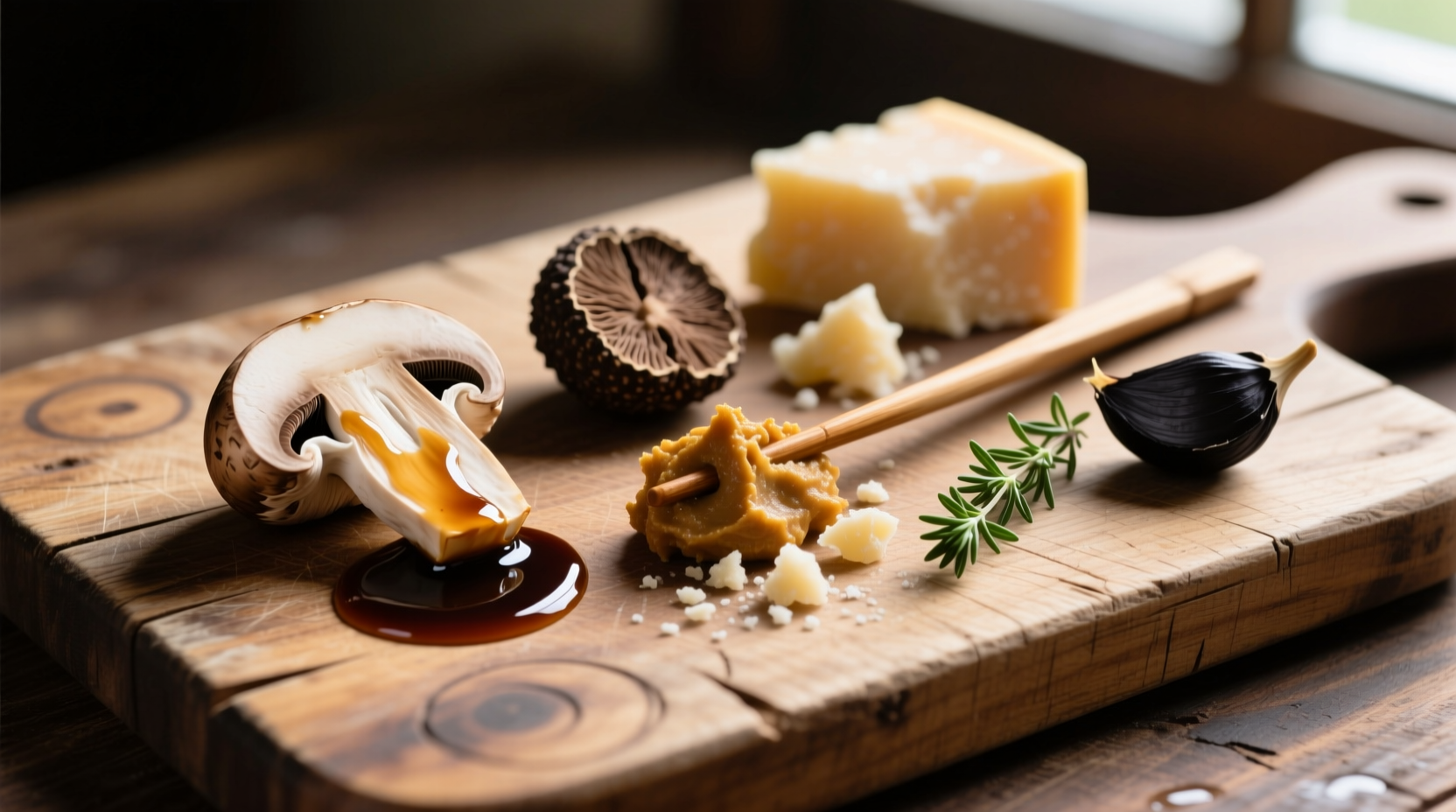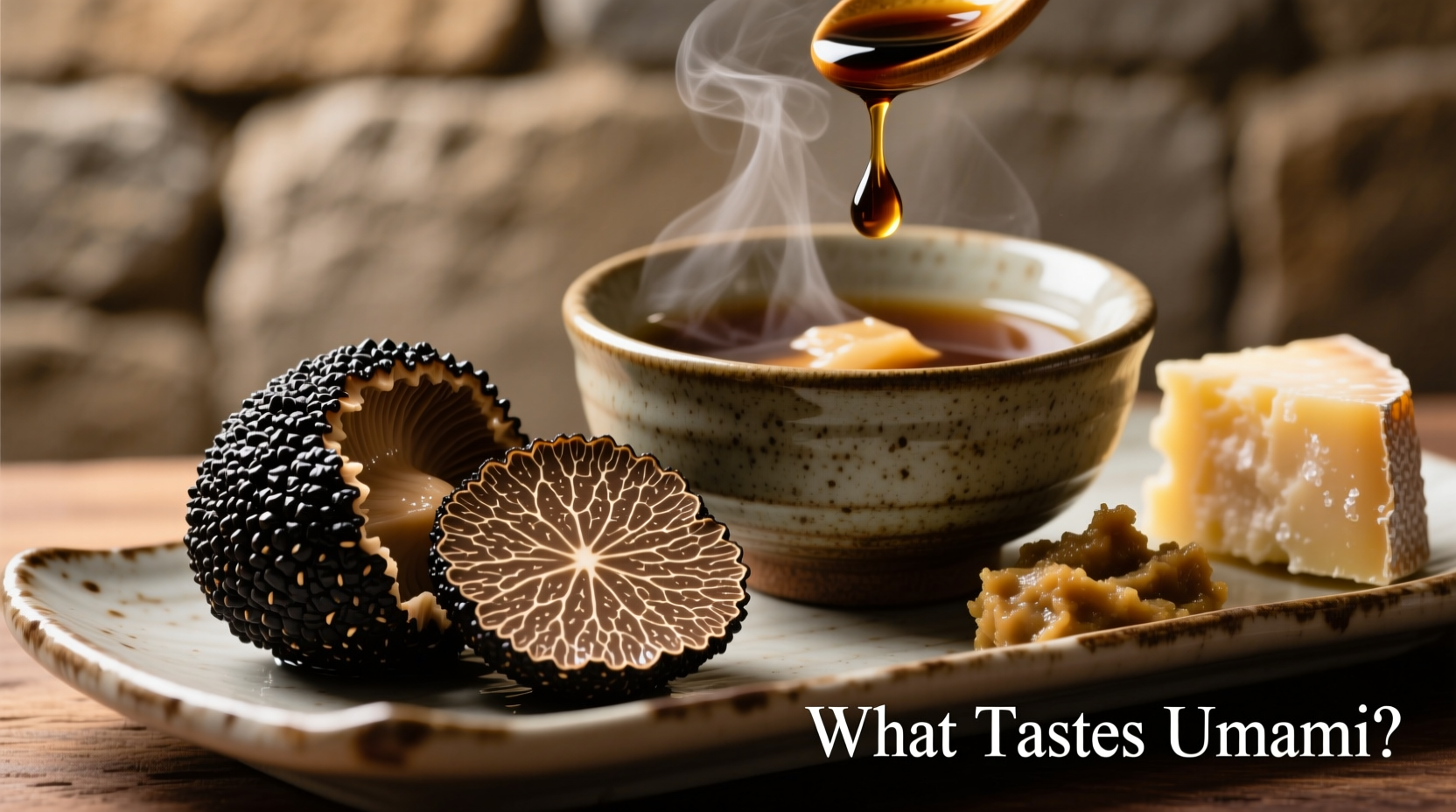Understanding what tastes umami transforms how you approach cooking and flavor building. This guide reveals the science-backed sources of umami and practical ways to harness this fundamental taste in everyday cooking.
Discovering Umami: More Than Just a Japanese Word
When you bite into a perfectly ripe tomato or savor a piece of aged Parmesan, you're experiencing umami—the savory taste recognized as the fifth basic taste alongside sweet, sour, salty, and bitter. First identified by Japanese scientist Kikunae Ikeda in 1908, umami (meaning "essence of deliciousness" in Japanese) represents our biological response to specific amino acids and nucleotides in food.
Unlike the other basic tastes, umami creates a mouthwatering sensation that lingers on your palate. This isn't just culinary hype—functional MRI studies confirm umami triggers distinct brain responses compared to other tastes. The American Chemical Society officially recognized umami as the fifth basic taste in 2000, validating what chefs have known for centuries.
Natural Umami Powerhouses: What Tastes Umami in Your Kitchen
Instead of reaching for processed flavor enhancers, discover these natural umami-rich ingredients already in your pantry or local grocery store. The following categories represent foods with scientifically measured high glutamate content:
| Food Category | Top Umami Sources | Glutamate Content (mg/100g) |
|---|---|---|
| Dairy Products | Aged Parmesan, Roquefort cheese | 1,200-1,680 |
| Fermented Foods | Soy sauce, fish sauce, miso paste | 780-1,140 |
| Vegetables | Tomatoes, mushrooms, asparagus | 140-246 |
| Meats & Seafood | Cured ham, bonito flakes, anchovies | 180-590 |
Data sourced from the National Institutes of Health's research on umami compounds confirms these measurements. Notice how aging and fermentation dramatically increase glutamate levels—the ripening process breaks down proteins into free glutamate, the compound responsible for umami taste.
How Umami Works: The Science Behind the Savory Sensation
Umami isn't just "tasty"—it's a specific neurological response. Your tongue contains specialized T1R1+T1R3 receptors that detect glutamate and nucleotides like inosinate and guanylate. When these compounds bind to receptors, they trigger a cascade of signals interpreted by your brain as savory satisfaction.
What makes umami unique is its synergistic effect. Combining glutamate-rich foods with nucleotide sources creates exponential flavor enhancement. For example, adding mushrooms (glutamate) to meat broth (inosinate) creates significantly more umami than either ingredient alone. This scientific principle explains why certain food pairings—like tomatoes with Parmesan or miso with bonito flakes—create magical flavor combinations.
Practical Umami Building: What Tastes Umami in Your Cooking
Transform your everyday cooking with these practical umami-boosting techniques that professional chefs use:
Dry-Aging Proteins
Dry-aging beef for 28-45 days breaks down proteins into free glutamate. The USDA's Agricultural Research Service confirms this process increases umami compounds by up to 300% compared to fresh meat. Home cooks can mimic this by searing steaks at high heat to create Maillard reaction browning.
Fermentation Magic
Create your own umami bombs through fermentation. A study published in Food Chemistry journal demonstrated that fermenting vegetables with koji mold increases glutamate levels 10-fold. Try making quick koji-fermented tomatoes by coating cherry tomatoes with koji spores and letting them rest for 3 days.
Smart Ingredient Pairing
Combine ingredients from different umami categories for maximum impact:
- Miso (glutamate) + bonito flakes (inosinate) = 7-8x more umami
- Ripe tomatoes (glutamate) + Parmesan (glutamate + inosinate) = 5x more umami
- Mushrooms (glutamate) + cured ham (inosinate) = 6x more umami

Umami Myths vs Reality: What Actually Tastes Umami
Let's clarify common misconceptions about umami sources:
Myth: MSG is the only source of umami
Reality: Monosodium glutamate (MSG) simply delivers glutamate in purified form, but hundreds of natural foods contain glutamate. The FDA confirms that MSG contains less sodium than table salt while providing equivalent flavor enhancement.
Myth: Umami only exists in Asian cuisine
Reality: Traditional Italian, French, and Latin American cuisines all leverage umami-rich ingredients. Think of aged Parmesan in Italian cooking, demi-glace in French cuisine, or slow-cooked mole sauces in Mexican cooking—all naturally high in umami compounds.
Myth: Umami means "bland" or "mild"
Reality: Umami creates a robust, satisfying sensation that enhances other flavors without overpowering them. Research from the Monell Chemical Senses Center shows umami increases perceived saltiness by 15-20%, allowing for reduced sodium while maintaining flavor satisfaction.
When Umami Matters Most: Practical Applications
Understanding what tastes umami becomes particularly valuable in these cooking scenarios:
Plant-Based Cooking
For vegetarian and vegan dishes, umami is essential for creating satisfying depth. Combine mushrooms, tomatoes, and nutritional yeast to mimic meaty flavors. The James Beard Foundation's plant-based cooking guide recommends this combination as the "umami trinity" for meatless dishes.
Sodium Reduction
When reducing salt for health reasons, boost umami instead. A study in the Food Quality and Preference journal found that adding umami compounds allowed for 30% sodium reduction while maintaining perceived flavor intensity.
Comfort Food Enhancement
Classic comfort foods like soups, stews, and sauces benefit from strategic umami additions. A splash of soy sauce in tomato soup or a Parmesan rind in bean soup creates richer, more satisfying results without altering the fundamental flavor profile.











 浙公网安备
33010002000092号
浙公网安备
33010002000092号 浙B2-20120091-4
浙B2-20120091-4